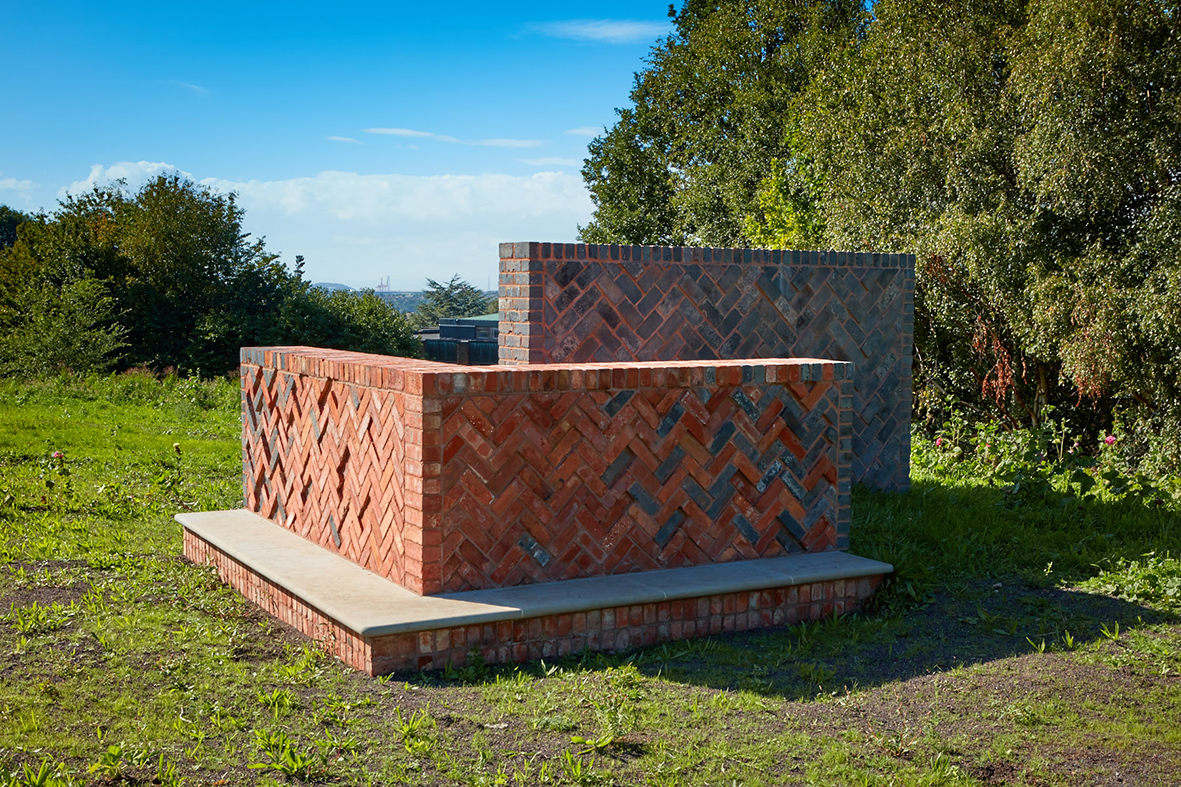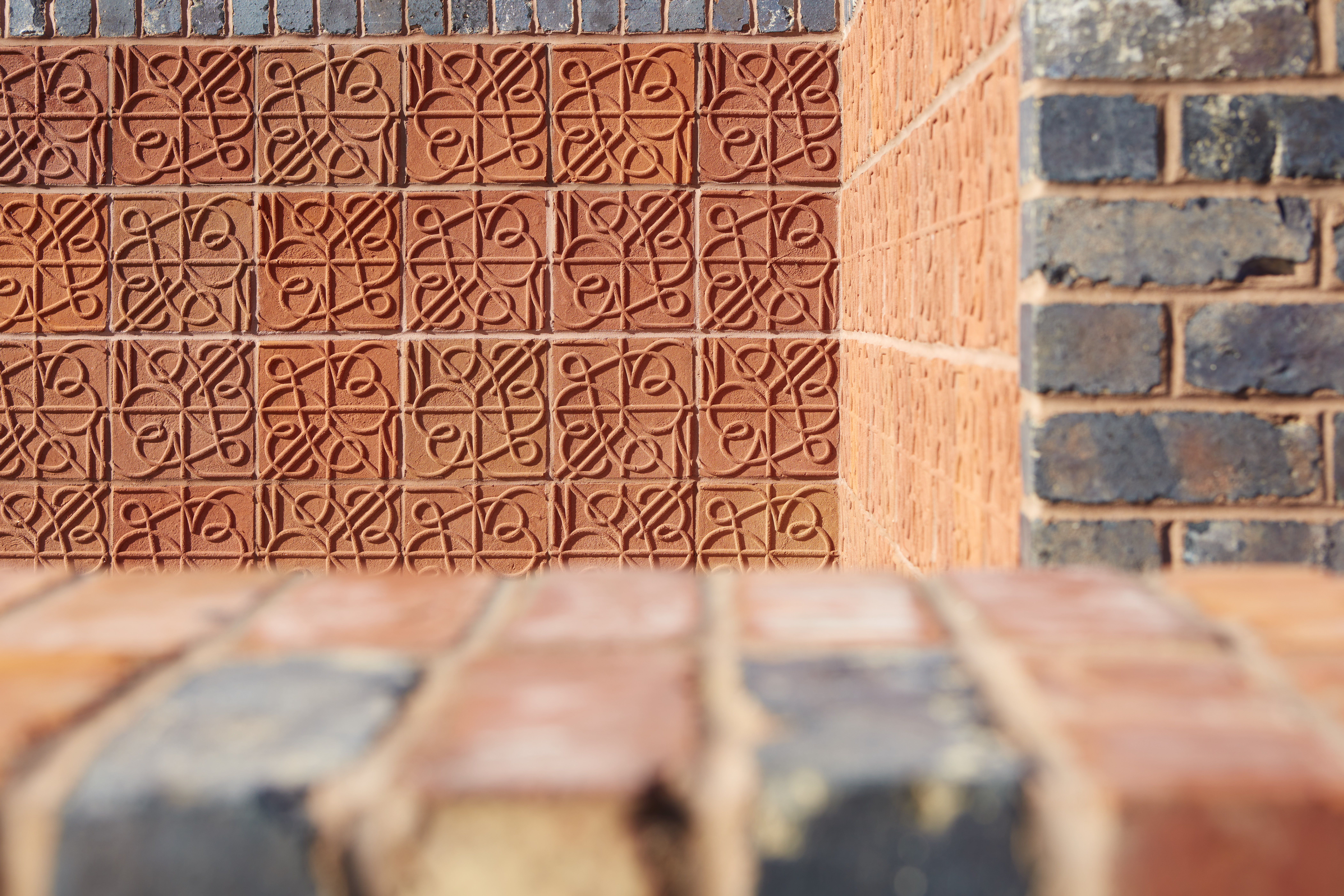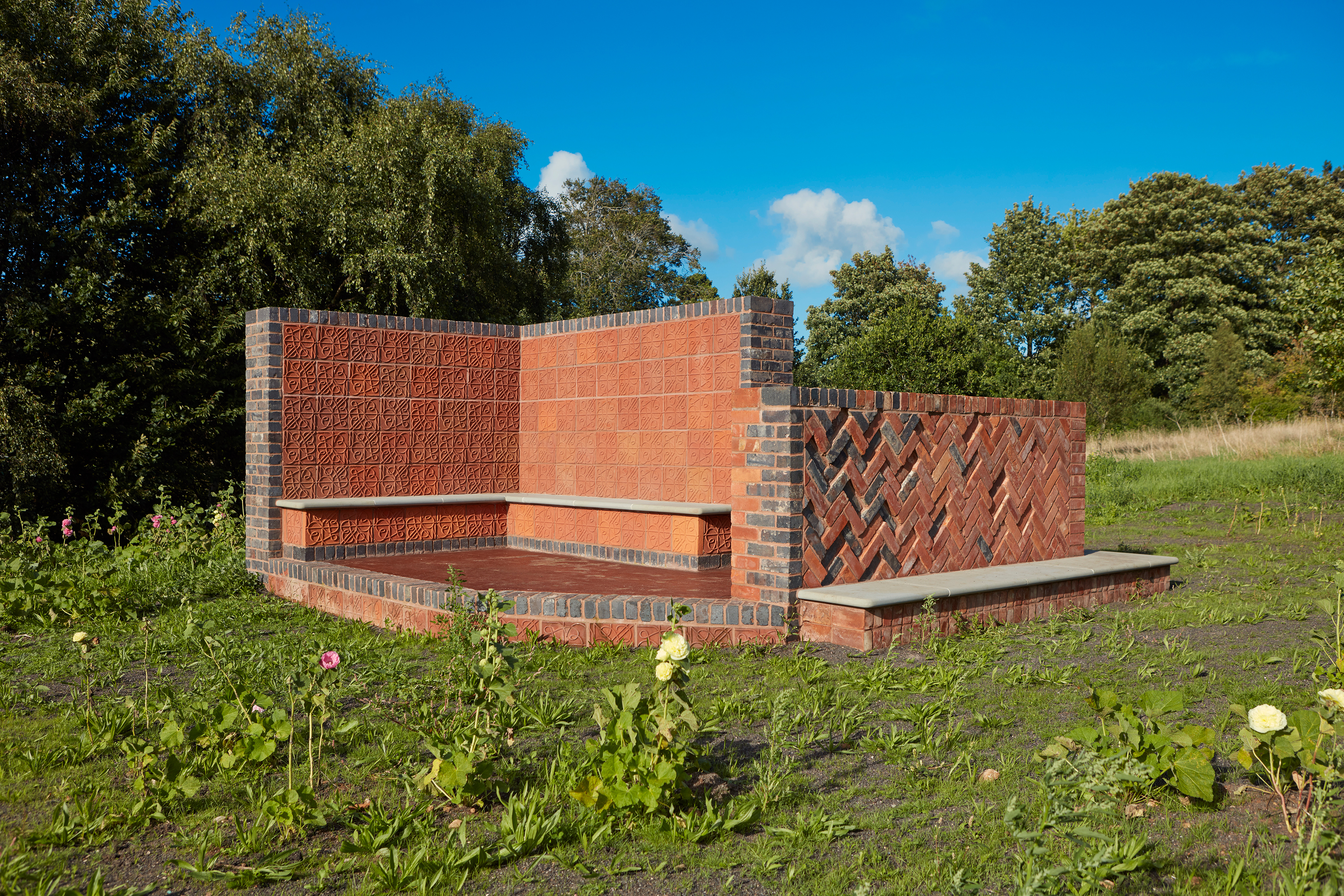







‘Edith and Hans’, 2015
Reclaimed brick and bespoke terracotta tile
2m x 4m x 5m
Stoke Bishop, Bristol
Commissioned by Field Art Projects and University of Bristol
Commissioned by the University of Bristol and produced by Field Art Projects, ‘Edith and Hans’ is the first permanent commission to be delivered as part of the University’s Stoke Bishop public art programme.
Located in a meadow between the Wills Hall and Hiatt Baker halls of residence, the new artwork is conceived as an ‘outdoor room’, somewhere between a ruin and an archaeological find. The highly textured sculpture is constructed from artist-designed wood-fired tiles, reclaimed red and blue bricks and pennant stone. The artwork will provide a place for contemplation, a meeting space, a site for picnicking and a locale for stargazing. Surrounded by Elizabethan meadow planting designed by the artist and orientated to harness the warmth of the afternoon sun, the sculpture offers long views across Avonmouth and into Wales in one direction, and in the other, a view up to Wills Hall past its inspirational chimneys and beyond to the stars.
Staton’s practice combines design and art history influences with formal sculptural values, often mixing traditional craft techniques with cutting-edge technology. She draws together various influences in her work: in the case of Edith and Hans, making multiple references to both the historic site of the artwork and its contemporary context. This encompasses the formerly grand 19th century Downside House that was extended to become Wills Hall in the 1920s, and the five other halls of residence representing different architectural styles from across the 20th century that occupy the site today.
Staton was selected both for her ability to deliver projects of national acclaim and her approach, which creates site-specific sculptural commissions that are sensitive to their location and aim to encourage practical use.
During the development of her proposal Sarah carried out extensive research into the history of the area, in particular the green spaces and buildings at Stoke Bishop. The research threw up a family connection, and the sculptures are named after the artist’s maternal grandmother Edith and her brother the emigree picture restorer Hans, both had personal connections to Bristol. As Director of Bristol Museum and Art Gallery, Hans knew the Wills and Hiatt Baker families who were patrons of the arts and gave their names to the adjacent halls of residence.
Creating a material palette that was sensitive to adjacent historic buildings, Staton sourced reclaim brick from local yards, and created a bespoke wood fired terracotta tile to complement the brick. The ‘Esperanto of Currency’ tile motif is formed like a restless monograph, composed of the symbols for major global currencies including yen, euro, pound, dollar and rupee. This tile celebrates the University of Bristol’s diverse global student community, and refers to the many countries across three continents Edith and Hans called home during their lives when war and revolution moved them on.
A planting scheme with fritellas, hollyhocks, dog’s tooth violet and mixed grasses was devised by the artist in conjunction with University of Bristol’s Head of Horticulture.
Sarah Staton (b.1961) creates work combining a sculptor’s sensibility with an interest in design, landscape and architecture. Her commissions have explored the interaction between audience and environment, for example becoming habitable or capable of supporting life. Sarah is interested in the tactile qualities and mix of hard and soft materials in the environment, an idea she returns to repeatedly in her work.
Photographs of Edith and Hans by Max McClure
Production Budget: £90k
Download Ellen Mara De Wachter’s commissioned response to Edith and Hans to read more about the work.
